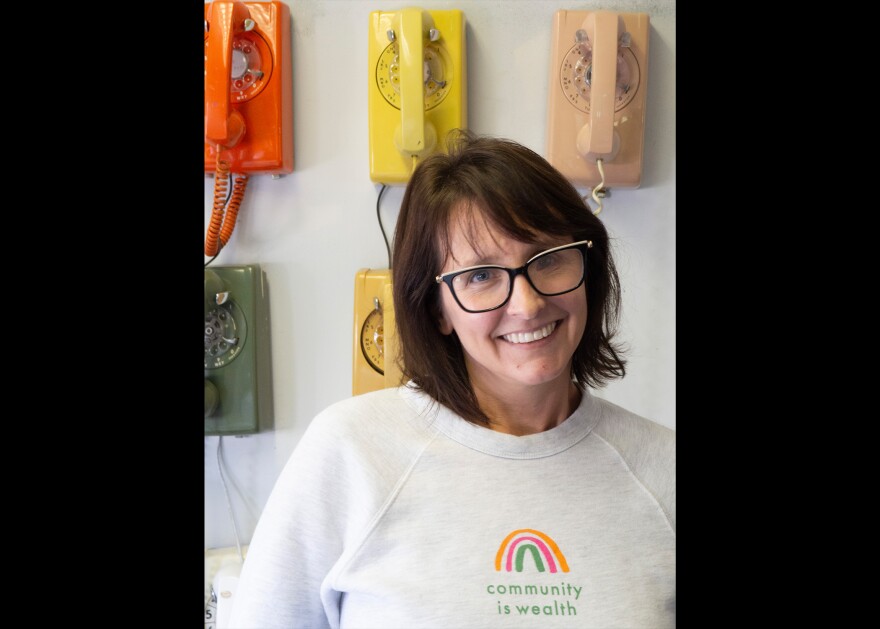At an art center in Cincinnati’s Camp Washington neighborhood is Wave Pool, which serves as a hub for art and community organizing. For Wave Pool co-founder and artist Calcagno Cullen, the arts is connecting art and community. Producer Susan Byrnes learned more.
When Calcagno Cullen, who everyone calls Cal, is met — envisioning is talked about a lot. The purpose of her work as an artist is to see the possibilities of things and make them happen.
“I knew that this was what I was supposed to be doing, finding ways to create spaces and opportunities for people to improve our culture. it’s just something I’ve always known. “
The challenge of connecting people to resources is something she loves. It even became the subject of some of her drawings that she’s shown in museums and galleries. Cullen's drawings look just like the big whiteboard she uses for planning, which is covered with a mind map of idea, partners and goals floating among her own quirky line drawings.
“And that image at the top left is just of a pair of glasses which I always wear, with one eye that just a normal illustration of an eye. On the left, the eye is like shooting out light, really as a symbol of optimism looking towards what might be possible. So that left eye, really because I’m blind in my left eye, I use that often as a symbol of being able to look beyond what is in my actual field of vision, really it’s a symbol of being able to envision something else.”
She was in a car accident when she was 16-years-old and her optic nerve was severed. She missed a whole year of school and had over seven surgeries.
“The car accident really was the start of me being an artist. I mean I really think it was because art was my mode of recovery. I spent so much time that year on the couch, in my bed, at my dining room table making art because I was out of school, I wasn’t socializing, I didn’t have people around, I mean that’s what I was doing all day was just making art. It really started me on this path of seeing art as a form of recovery and then story sharing.”
Story sharing is seen by Cal as a way for Wave Pool to meet the needs of the neighborhood. One program called “Owning Your Own Voice" teaches woodworking skills to people in addiction recovery. She’s also built a teaching kitchen to share food cultures and improve access to fresh food. She’s even made a pop-up nail salon for women to share stories about reproductive health challenges.
“We’re gonna paint your nails and talk about sex...”
“Um, sorry. It’s the doorbell.”
She goes to answer it and returns with a delivery of small hand-woven rugs for a project called “Welcome Editions” with refugee and immigrant artisans.
“We wanted to figure out how to get them paid a living or above living wage for their work.”
Cal asked internationally known artists to collaborate on a series of artworks that the artisans could make right in Cincinnati. The art has a high value because of the clout of the lead artist. Wave Pool sells it at New York City’s Armory Show — a staple of the global art market so they can pay the artisans $25 per hour.

“Art is crucial to what makes us human. I think it has become separated from daily life, elitist, in an ivory tower. I think that there’s so much potential to bring art back into what makes communities thrive. And sometimes it’s really hard but all we can do is just keep moving forward, and I get very excited to try new things and that always outweighs the fear of failure. There’s something about a near death experience that makes everything fall into perspective. When you think about well, I may die tomorrow, it’s like you just try it, it’s ok let’s just go for it.”
On her whiteboard, there’s a drawing with Saturn-ringed planets and stars hovering above the question, “So where do we go?”



